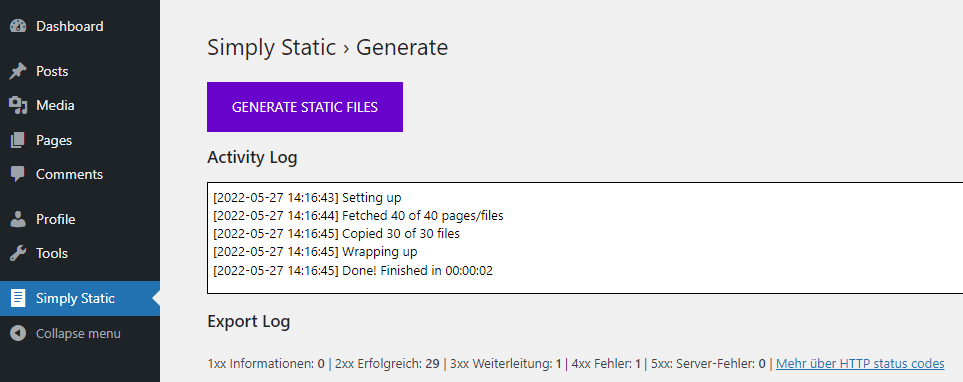Quite a strange statement, isn’t it? Using a WordPress-Theme, “proudly presented by” in the corner and overall a very familiar look and feel of the most commonly used blogging CMS. And yet this is not a wordpress-instance. What it actually is, I want to explain in this post.
When I thought about how to realize this project, WordPress was the most obvious solution. It is widely spread and used for far more than just blogging. Because of it’s popularity there is also more support availbale (community and commercially) than with any other system. It’s comfortable to use and massively expandable.
Those features come with a trade-off though. Since it’s so widely spread, it’s one of the biggest targets for hackers and other good-for-nothings who want to take over badly maintained systems or use security flaws for that matter. As an administrator who already witnessed such a scenario, I really wanted to avoid that.
One thing really helped me with avoiding those trade-offs: I don’t want to use any Web-2.0-features such as commenting. I deem it rather useless anyways, who in this day and age registers on a private blog to write a comment anymore (be honest, I for myself never did that)? That makes a lot of things much simpler, since there is no need for any processing on the server side. Just simple providing of flat files. I just needed to find a way to generate static sides from my dynamic instance.

Using this solution, I killed two birds with one stone: in the background there actually is a WordPress instance running, providing me with all the tools to comfortably write and administer posts and the site itself. When I’m done writing something (like this in a couple minutes), I just click a button and let the system generate the static version. Through a script I wrote, it’s transferred to the public web server which provides it to you.
For the reader, this is not noticable – static files are served anyways, the processing part was always hidden in the backend. Additionally, the admin panel is only accessible by me and not added to the static version – hidden behind a secure connection on a different server. So, even if someone got my username and password, there was no way this person could log into my system.
But let’s track back to my initial statement: this is not WordPress. It’s a snapshot of an instance hidden away, a hardcopy you might say. I am very happy with this solution and how beautifully it works.
I hope this insight in the system was interesting. If you want to know more about it, don’t hesitate to ask. I just hope you got an idea of what I build here!